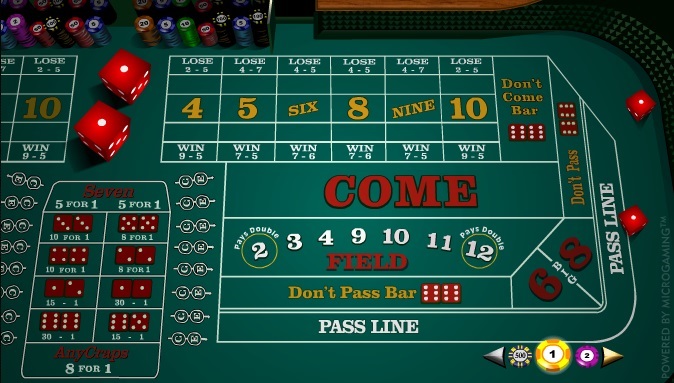
Craps Unrolled: A Comprehensive Guide to Mastering the Dice
Craps, a classic dice game rooted in rich history, has graced the floors of casinos for decades. Its unique blend of strategy, luck, and camaraderie has made it a favorite among seasoned gamblers and novices alike. This guide dives deep into the nuances of craps, equipping you with the knowledge to confidently roll the dice and join the action.
The Origins of Craps: From Streets to Casinos
The history of craps is as thrilling as the game itself. Believed to have originated from an ancient game called “Hazard”, craps has evolved through cultures and eras. The simplified version we play today was developed and popularized in New Orleans in the early 19th century.
Moving from the streets to the lavish casinos of Las Vegas, craps found its home on the green felt tables, surrounded by excited players waiting for the next roll. Its transition to the digital world further expanded its reach, making it accessible to a global audience.
Understanding craps’ rich heritage not only adds depth to the game but also fosters a deeper appreciation for every dice throw and bet made.
Basic Rules: Getting Started with Craps
At its core, craps is a game where players bet on the outcome of the roll or a series of rolls of a pair of dice. The player rolling the dice is known as the “shooter”. Bets are made against the casino or other players, adding a layer of strategy to the game.
The game starts with the shooter making a “come-out” roll. The game’s progression is determined by this roll, leading to either a continued series of rolls or a conclusion of that round.
Craps tables can appear complex, with a myriad of betting options. However, by understanding the basic rules and bet types, the table quickly becomes less intimidating, paving the way for strategic gameplay.
Craps Strategy: Increasing Your Winning Odds
While craps largely relies on luck, a solid strategy can enhance your chances of winning. The house edge varies based on the type of bet placed. Thus, understanding which bets to avoid and which to focus on is crucial.
For beginners, sticking to “pass” and “don’t pass” line bets is advisable, as they offer a relatively low house edge. As players become more familiar with the game, exploring more complex bets like “come” and “don’t come”, or placing odds bets, can add depth to the strategy and potentially increase winnings.

Etiquette and Tips: Playing Craps Like a Pro
Whether you’re at a brick-and-mortar casino or playing online, adhering to craps etiquette ensures a smooth gaming experience. Simple gestures like cheering for other players or handling the dice with one hand in land-based casinos can make a difference.
Bankroll management is another crucial aspect. Setting a budget and sticking to it prevents unnecessary losses. Moreover, taking breaks, especially after a series of unsuccessful rolls, can help in regaining focus and composure.
Lastly, while strategies can improve odds, it’s essential to remember that craps is a game of chance. Enjoying the game, relishing the highs, and gracefully accepting the lows makes for a fulfilling craps experience.
Conclusion: Embracing the World of Craps
Craps is more than just a game; it’s a journey filled with excitement, anticipation, and camaraderie. By understanding its history, rules, and strategies, players can fully immerse themselves in the world of craps and enjoy it to its fullest.
Whether you’re a novice taking your first steps or a seasoned player looking to refine your strategy, this guide serves as a companion on your craps journey. So, grab the dice, and let’s roll!
